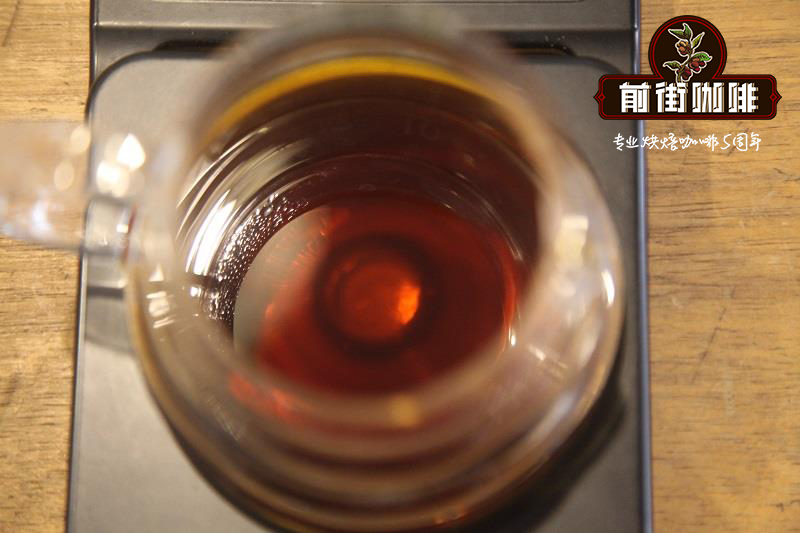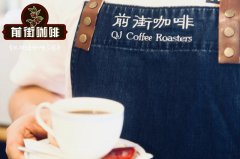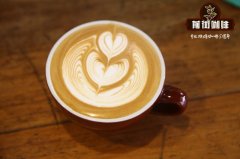From the Alcohol White Coffee, we can see the fatal wound of Costa-why can Fuluibai crush the Alcohol White?

Professional coffee knowledge exchange more coffee bean information please follow the coffee workshop (Wechat official account cafe_style)
Costa doesn't have the life of boutique coffee, but he has the disease of boutique coffee. Why would you say that? Take a look at the following analysis:
one
Too much emphasis on authentic pedigree, but ignore the feelings of consumers
In 2007, Costa entered the Chinese mainland market, eight years later than Starbucks, but compared with the latter, Costa still seems to be in the stage of "water and water": Costa has more than 420 stores in China, while Starbucks has nearly 3000.
In brand stories, Costa has always emphasized his authentic British ancestry.
According to its official website: Costa began in London's Old Paradise Street in 1971, the two brothers Bruno and Sergio Costa from Italy created the unique mocha Italian mixed coffee beans, they perfectly matched Arabica and Robster coffee beans, through slow baking to retain their charming aroma and oil.
London Old Paradise Street, original, perfect match …... The use of these words conveys Costa's pride in its British ancestry.
Listening to these words, it is easy to remind people of China's extremely exquisite mountain tea, as well as the culture of the origin of fine coffee. What they have in common is that they push a culture to the extreme and lose the mass aesthetic at the same time. For Costa, there is still a "gap" to bridge how to familiarize consumers with such brands.
Every Spring Festival, Coca-Cola uses a lot of Chinese red to show its hospitality and to reflect the happy atmosphere when everyone is reunited, giving consumers a psychological hint that Coca-Cola can create such an atmosphere.
And Ikea, in the store display, in addition to creating a simple, warm and comfortable experience, it will take into account the challenges that consumers may encounter in dressing up, and help consumers solve these difficulties. Surprise consumers: everywhere from the consumer's point of view.
Let's take a look at Starbucks' practice, emphasizing the concept of the third space and focusing on the dissemination of warm and sincere partner culture. Whether in product innovation or store decoration, we strive to integrate Chinese culture into it. They even sell moon cakes and zongzi-all building emotional ties with consumers.
The global expansion of business is essentially cultural export. Consumer behavior is actually a process of finding a sense of identity, or a sense of tagging.
The same is true in human-to-human communication, and the way to get familiar with it more quickly is to find common topics and produce "empathy".
In contrast, Costa, known as British descent, stressed that he is a coffee family, these actions are from the "I" point of view, it is difficult to connect with consumers, causing too much emotional resonance.
For consumers, I am afraid it is really across the English Channel between a brand that has no "empathy".
two
A brand that is targeted at Starbucks, but seeks a "sense of boutique"
We are used to dividing the development process of the coffee industry into three stages: instant coffee is the first wave of coffee; coffee chains like Starbucks are the second wave of coffee; and the concept of boutique coffee is the third wave of the coffee industry, represented by Blue Bottle, Shu Dun City, intellectuals and so on.
Under the third wave of boutique coffee, a remarkable feature is that coffee is more regarded as a craft or craft product. In order to make a perfect cup of coffee, the planting, picking, roasting and production of coffee beans have become a very important process.
In the eyes of many consumers, Costa, like Starbucks, is seen as a coffee brand born under the second wave of coffee.
Costa, on the other hand, seems to disagree with his camp, claiming "artisanal coffee quality", "slow roasting, the right rather than quick approach", "ingenuity" and insisting on using semi-automatic coffee machines.
In other words, Costa does not see himself in the eyes of consumers.
It is true that semi-automatic machines are the basis for making good coffee, but its advantages are also weaknesses. Baristas are highly demanding of baristas. Different baristas may make different coffee, especially for chain brands that open many stores.
For consumers, if it's luck to have a good cup of coffee at Costa, why not choose a stable cafe? Or even more demanding, there are those boutique cafes!
three
It's not enough to make a product, it's too "Buddhist".
In the business world, trends come and go, but one thing remains the same: distracted products.
Later than Starbucks' entry into China's Costa, it is even more difficult to open up its own market in Starbucks' dominant territory, but the product is a good voice tool.
Costa emphasizes the "bean-to-cup" integrated service, insisting that there are no third parties involved in purchasing, storing, mixing, roasting, grinding and coffee production of raw beans, and they adopt a more labor-consuming and time-consuming slow baking, resulting in a softer and mellow taste.
But in today's rapid pace of life, not everyone can endure a long wait, waiting at the same time, the customer experience will be greatly reduced. The advantage did not appear, but was criticized by people.
In addition, it is difficult for Costa to find a product that is recognized by consumers and can be prominently labeled by itself. Like Starbucks' Frappuccino, Costa has a cool ice series, but it doesn't have a strong sense of existence.
When it comes to flat white, it's called Furebai at Starbucks and mellow Yibai at Costa. When Starbucks launched FureBai, it did a lot of promotion: the billboards in front of each store, the brochures in the store, and even the pictures of Dianping on Starbucks were replaced by it.
In fact, Costa launched this product before Starbucks. After Starbucks launched FureBai, there was an introduction entitled "this is the Real Flat White" on Cosat's Wechat public account, as if shouting to Starbucks.
Cognitive psychology holds that when people come into contact with strange things, they will use psychological schemata in order to improve their cognitive efficiency. Popularly speaking, in the face of new things, most people will 'take it for granted' and 'brain supplement' instead of studying it in detail.
It doesn't matter whether the fragrant white is good or not, it must be distinguished from the latte. It doesn't matter whether Fului is authentic or not, the important thing is preconception and identification, taking the lead in occupying the minds of consumers. And these Starbucks did, but Costa didn't.
Let's take a look at the more basic indicator for evaluating a product-the stability of the product.
In December last year, the official account "thoughtful Shanghai" tested the super-large beverage capacity of some beverage brands in Shanghai.
Costa600ml's large cup of American coffee was evaluated only by 500ml and 485ml, respectively, with a difference rate of 13.33% and 16.67%, respectively. It was complained that "there are no strict quality control standards, Buddhism makes coffee."
In the same evaluation of Starbucks, the official data of super-large American coffee is 592ml, and the measured value is 550ml, with a difference rate of 7.09%, which is on the low side in this group of data.
four
Naturally proud, "perfunctory" media social attitude
In today's era of enterprises, that is, the media, the value of simple advertising marketing and compulsory marketing has gradually declined. Especially for the younger generation who have grown up under the influence of social media, content that is more entertaining and interesting tends to be more popular.
Starbucks has done its best in this respect. Once upon a time, Charlene Li, an analyst at market research firm Altimeter, listed the 100 brands with the highest participation in social media relationships, with Starbucks at the top.
Search for Costa in Baidu News, there are 272 pieces of news, but almost all of the news comes from joint events or new products. The media's attention to it is evident. The number for Starbucks is 32000.
In terms of consumer word-of-mouth, it seems that Costa is also doing interaction and co-naming new products, but it always gives people a perfunctory sense of "yes, I did it," so how to move consumers' hearts?
In terms of brand exposure, the Baidu index illustrates this problem. The Baidu index for nearly a month shows that the overall daily average and mobile daily average of Costa are 1292 and 867 respectively, while that of Starbucks is 7551 and 5343.
So, whether it is brand awareness or familiarity, Costa still has a long way to go.
In the eyes of many people, Costa is a respectable company, they are loyal to the espresso tradition, and their coffee is the favor of many coffee lovers.
However, the competition in the business world is cruel, and you must find the path and method that suits you, and achieve and maintain the best in every aspect in order to succeed.
Important Notice :
前街咖啡 FrontStreet Coffee has moved to new addredd:
FrontStreet Coffee Address: 315,Donghua East Road,GuangZhou
Tel:020 38364473
- Prev

Even bulletproof coffee can be made at home so as to reduce the harm of bulletproof coffee!
Professional coffee knowledge exchange more coffee bean information please pay attention to the coffee workshop (Wechat official account cafe_style) popular in Europe and the United States, more Hollywood celebrities flock to the bulletproof coffee Bulletproof coffee, in China, although people are not familiar with, but in the past few years, you may have heard of it, but did not in-depth research, you may be like me, it is still
- Next

COSTA Alcohol White Coffee introduces what is the difference between mellow white coffee and latte
Professional coffee knowledge exchange more coffee bean information please follow the coffee workshop (Wechat official account cafe_style) a cup of Flat White, no Cappuccino thick thick milk foam, but also a little stronger than Latte. A thin layer of delicate milk foam, each mouthful can drink the perfect fusion of the foam and the bottom coffee milk. This is probably what it feels like in autumn, when a cup of iced coffee is flat.
Related
- What documents do you need to go through to open a coffee shop? coffee shop coffee shop certificate processing process
- How to purchase Coffee beans in small Cafe how to choose a suitable supplier for domestic Coffee supply Company
- How to drink Starbucks Fragrance White Coffee? how to make Australian White Coffee? what Italian coffee beans are recommended?
- The Story of Flora Coffee: the name of Flora Coffee Bean and the implication of the Flowers on Florna Coffee
- How much does a cup of coffee cost? How much is the profit of a cup of coffee? What is the profit of the coffee shop in a year?
- Yunnan small Coffee, known as "fragrant Coffee", introduces the characteristics of Alpine Arabica Coffee producing areas in Yunnan, China
- 2023 latest Starbucks full menu price list how much is a cup of Starbucks coffee what is better to drink the most popular hot and cold drinks recommended
- Starbucks different kinds of Coffee Price list Starbucks menu 2023 Top Ten Best drinks in Starbucks
- Starbucks Spring praise Comprehensive matching Coffee Bean theme Story Packaging implication and taste description
- The cost of a cup of coffee latte American coffee cost price and selling price

